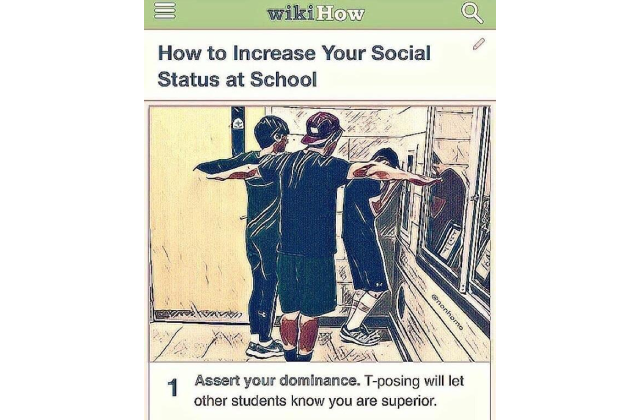INSIGHT: Bandar Utama School Stabbing Raises Questions About Youth Exposure To Misogynist Online Spaces
A 14-year-old boy allegedly stabbed a 16-year-old female student to death at a Selangor school after she rejected his romantic advances, sparking concerns about youth violence and school safety.

UPDATE: A follow-up to this article is available here.
Bottom Line Up Front
- A 14-year-old male student allegedly stabbed a 16-year-old female classmate to death on 14 October 2025 after she rejected his romantic confession, representing the second rejection-motivated knife attack in a Malaysian educational institution within three months.
- The attack was highly premeditated (multiple combat knives, tactical planning within 24 hours), with sources within the school community reporting the suspect had exhibited behaviours associated with online subcultures in preceding weeks.
- This case follows an established international pattern where exposure to online misogynist subcultures ('manosphere' and incel communities) transforms romantic rejection into perceived justification for lethal violence against women.
- Malaysia currently lacks frameworks for identifying youth exposed to violent misogynist ideologies online, creating a critical gap in threat detection and prevention capabilities that enabled this attack and may enable future incidents without urgent intervention.
Analysis
The fatal stabbing at SMK Bandar Utama Damansara (4) on 14 October 2025 represents a disturbing escalation in Malaysian school violence. According to media reports, the 14-year-old suspect confessed romantic feelings to the 16-year-old victim the night before the attack, and when she rejected his advances, he reportedly became enraged. The following morning, he brought multiple knives to school, cornered the girl in the female washroom, and stabbed her repeatedly inside a cubicle whilst holding her hostage. The sequence of events (confession on the evening of 13 October, rejection, followed by bringing multiple weapons to school the next morning to corner and attack the victim) and whispering intent to a fellow schoolmate indicates premeditation rather than an impulsive act of violence.
This is not an isolated incident. Within three months, Malaysia has experienced a second, strikingly similar attack. On 15 July 2025, a 21-year-old Chinese national slashed his 20-year-old ex-girlfriend's neck with a knife at Taylor's University in Subang Jaya. The victim was reportedly being detained against her will prior to the attack. The escalation from a non-fatal attack at a university to a fatal attack at a secondary school, combined with the decreasing age of perpetrators (from 21 years old to 14 years old), raises questions about whether an emerging pattern is developing in Malaysia.
When Rejection Turns Lethal
The pattern of romantic rejection followed by extreme violence is well-documented internationally, particularly where perpetrators have been exposed to online misogynist subcultures known as the 'manosphere' and 'incel' (involuntary celibate) communities. These digital spaces reframe normal interpersonal disappointments as profound injustices requiring violent response, transforming rejection from a common human experience into perceived justification for murder.
The 2014 Isla Vista attack by Elliot Rodger represents the landmark case. Rodger, then 22 years old, killed six people and injured 14 others after years of documenting his hatred of women who rejected him. He posted a manifesto titled 'My Twisted World' and a YouTube video explaining his intent to punish women for refusing his romantic advances. Rodger has since become a martyr figure within incel communities, with subsequent attackers explicitly referencing him as inspiration. The 2018 Toronto van attack perpetrator posted 'the Incel Rebellion has already begun' before killing 10 people, explicitly framing violence as retaliation against women. More recently, the 2023 Allen, Texas mass shooter's writings revealed deep immersion in manosphere narratives that frame violence against women as a legitimate masculine response to rejection.
The Bandar Utama case follows this pattern in troubling ways: romantic confession, rejection, and immediate lethal retaliation within less than 24 hours. The suspect's targeting of the specific girl who rejected him, combined with the selection of combat-aesthetic weapons and compressed timeline aligns with documented cases where online ideological frameworks transformed interpersonal rejection into perceived justification for violence. However, Malaysian authorities have not publicly indicated whether investigators are examining the suspect's digital footprint, though the behavioural parallels to international cases suggest this should be a priority investigative avenue.
Observable Patterns in Behaviour and Planning
What makes the Bandar Utama case particularly concerning is that warning signs may have been visible in the weeks before the attack. According to sources within the school community, the suspect had exhibited behavioural patterns suggesting engagement with specific online subcultures.[1] Parents of students at the school described the suspect as unremarkable academically and socially but noted he had been displaying performative behaviours associated with gaming and streaming cultures, including 'T-posing' in the school quadrangle and mimicking controversial streaming personalities.

Figure 1: The gesture originates from video game animation glitches and has been adopted in some online subcultures as a gesture of dominance or mockery (source: spyicup / Reddit).
T-posing, while originating as a technical animation glitch in video games, has been adopted in certain online communities as a gesture of dominance or mockery. The mimicry of streaming personalities known for provocative content further indicates engagement with specific digital subcultures. When combined with the subsequent planned violence, these observations raise questions about whether the suspect was consuming content from more extreme corners of online spaces where misogynistic narratives circulate.
Premeditation and Weapon Selection
The suspect's choice of weapons provides further evidence of deliberate planning. He selected combat-oriented weapons (a bowie fighting knife and karambit) rather than common household items or readily available kitchen knives. These are purpose-designed fighting implements marketed with martial or tactical aesthetics. This pattern of weapon selection is not unique. In a 2020 Singapore case, a 16-year-old planning attacks on mosques selected a Smith & Wesson machete after exploring other weapon options including firearms and explosives. Operating within Singapore's strict weapons regulations (like Malaysia), that youth was attracted to weapons with military or tactical characteristics. The commonality between both cases (youths in countries with strict weapons controls deliberately selecting bladed weapons with martial or 'macho' aesthetics rather than readily available household alternatives) suggests that the symbolic and aesthetic dimensions of weapon choice may play a role in youth violence planning, beyond purely functional considerations.

Figure 2: Bladed weapons reportedly recovered at the scene. Police confirmed recovery of two sharp objects. (Source: Images circulating on social media)
This pattern of planning mirrors patterns observed in premeditated school attacks internationally. School shootings in the United States similarly involve preparation, deliberate weapon acquisition, and targeting of educational institutions. Whilst weapon types differ due to regulatory environments (firearms in permissive jurisdictions, bladed weapons in restrictive ones), the underlying patterns of calculated youth violence targeting peers remain consistent across contexts.
The Attack and Its Aftermath
The attack itself illuminates both the determination of the perpetrator and the challenges schools face in responding to such violence. After fatally stabbing the victim in the washroom, the suspect, with bloodstained clothing and still armed, burst into multiple Form One classrooms, causing widespread panic as students screamed and fled. A discipline teacher who responded to the initial alert attempted to kick down the washroom door to reach the victim, and only after "several attempts" managed to break through. By that time, the suspect had escaped and begun chasing other students. The situation was only brought under control when the suspect's elder brother and several teachers physically restrained him and seized the knife after a struggle. This extended sequence, spanning multiple locations within the school and involving numerous potential victims, highlights challenges in emergency response capabilities and facility design.
Investigation and Broader Context
Petaling Jaya district police chief ACP Shamsudin Mamat confirmed that investigators are examining romantic rejection as a possible factor, though he declined to provide details whilst the investigation remained ongoing. Initial police statements indicated that preliminary findings did not reveal "any elements of bullying". This incident is part of a broader cluster of serious violence in Malaysian educational settings. Just two weeks before the Bandar Utama incident, four teenagers were arrested in Melaka for allegedly gang raping a Form Three student in a classroom on 2 October. Combined with the two rejection-motivated knife attacks within three months, this concentration of serious incidents has intensified public scrutiny of school safety protocols.
However, Inspector-General of Police Datuk Seri Mohd Khalid Ismail noted that such incidents remain statistically rare across more than 10,000 schools nationwide. Selangor Chief Minister Amirudin Shari announced cooperation between state government, police, and the Education Ministry to "immediately enhance the level of safety in all schools across the state." The Education Ministry has mobilised counsellors to provide support to affected students and staff.
Why It Matters
The Bandar Utama school stabbing raises important questions about how Malaysian authorities understand and respond to emerging forms of youth violence. As the investigation continues, a critical avenue to explore is the suspect's online activities and potential exposure to communities that glorify violence against women. International precedents demonstrate that forensic examination of digital footprints in similar cases has revealed consumption of content glorifying violence, participation in forums with extreme misogynistic narratives, references to past attackers as inspirations, and escalation in violent rhetoric following rejection experiences.
The compressed timeline (confession to attack within 24 hours), deliberate weapon selection with tactical aesthetics, and targeting of the specific girl who rejected him all align with documented patterns from international cases. The fact that this represents the second rejection-motivated knife attack in a Malaysian educational institution within three months suggests an emerging pattern rather than isolated incidents. The escalation in lethality (non-fatal to fatal) and decreasing perpetrator age (21 to 14 years old) are particularly concerning indicators that warrant closer examination of whether similar ideological factors are at play.
It is critical to emphasise that behaviours associated with gaming and internet culture are widespread amongst adolescents and do not, in isolation, indicate violent intent. Millions of young people worldwide participate in gaming communities, watch streaming content, and engage with meme culture without any association with violence. However, within the broader ecosystem of online spaces, certain corners harbour misogynistic narratives and violent ideation that can exploit adolescent engagement with these mainstream cultures as pathways to influence. The challenge for educators and security professionals is identifying when an individual's engagement has shifted from mainstream participation to immersion in more extreme spaces where violent misogyny is normalised.
For security stakeholders and education policymakers, this case underscores the complexity of preventing this form of youth violence. The incident raises questions about threat assessment capabilities, procurement monitoring (how dangerous weapons are sourced and sold to minors), emergency response protocols, and the need for digital literacy programmes that address violent misogynist content.[2] Without frameworks for identifying students who may be exposed to harmful online influences, prevention efforts may continue to miss critical intervention opportunities. As investigations continue, the findings may inform future discussions about school safety, youth mental health support systems, and intervention mechanisms for students who may be vulnerable to these influences.
Based on information collected by the author from community sources, October 2025. ↩︎
Editor's note: This analysis has been updated to clarify "weapon detection measures" as "procurement monitoring (how dangerous weapons are sourced and sold to minors)" to accurately reflect concerns about weapons supply chains and seller accountability to minors. ↩︎
Appendix:
Weapons Analysis
| Element | Details |
|---|---|
| Weapons Used | Bowie-style fighting knife and karambit (two fixed-blade combat knives) |
| Weapon Characteristics | Purpose-designed for combat; marketed with tactical/martial aesthetics; not household items |
| Significance | Deliberate selection suggests symbolic/aesthetic considerations beyond functionality; similar to 2020 Singapore case (machete selected for mosque attack) |
| Procurement | Brought from outside school; purchased online |
| Combat Type | Close-quarters, intimate violence requiring direct physical proximity to victim |
See also:





